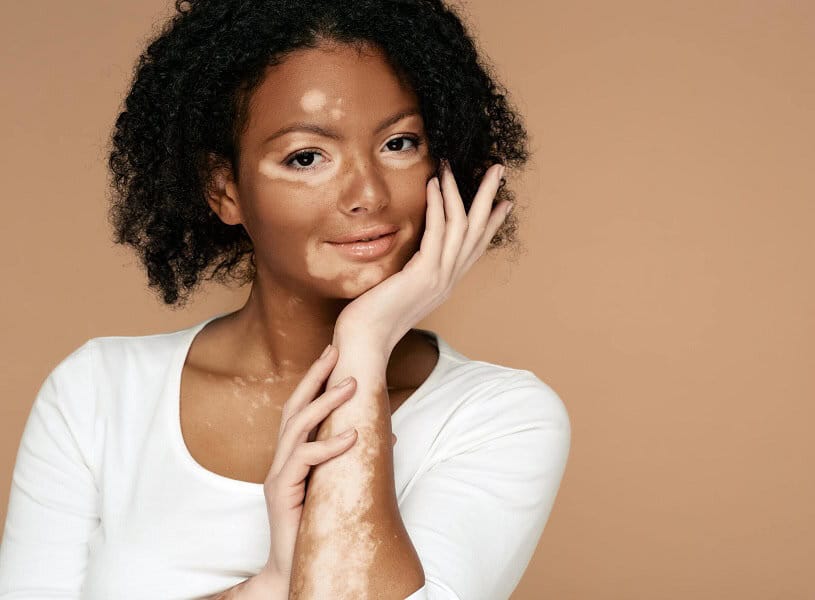Vitiligo IN Burbank, CA

FAQ'S
What are the Symptoms of Vitiligo?
Signs and symptoms include:
• Patchy loss of skin color. Usually, it appears on the hands, face, and areas around body openings, plus the genitals.
• Premature whitening or graying of the hair, eyelashes, eyebrows, or even your beard
• Loss of color in the tissues that line the inside of your mouth and nose
It is difficult to determine how vitiligo will progress. At times, the patches stop forming without treatment; however, in most cases, pigment loss spreads. Eventually, most of the skin will be involved. There are times, however, when the skin gets color back.
When should I see a medical professional?
Vitiligo has no cure, but treatment might stop or slow the discoloring process. Your medical professional will question you about your medical history and family medical history and examine your skin. The evaluation may also include a skin biopsy and blood tests.
What medications can be used?
No drug stops the progress of vitiligo, but some drugs, in addition to light therapy, can help restore some color.
Drugs that control inflammation is a corticosteroid cream applied to the affected skin may return some color. This treatment is effective when vitiligo is still in an early stage. Corticosteroid pills or injections may be prescribed for those whose condition is progressing quickly.
Calcineurin inhibitor ointments might be effective, especially on the face and neck. However, the FDA has warned about links between these drugs and lymphoma and skin cancer.
Other therapies that may work for vitiligo include:
Light therapy. Phototherapy with a narrow band of ultraviolet B has been shown to slow the progress of vitiligo. However, it will take 1 to 3 months before you notice the changes, and it might take longer to get the full effect.
Psoralen and light therapy are treatments that combine a plant-derived substance called psoralen with light therapy. After taking psoralen, you are exposed to ultraviolet A light. This therapy may remove the remaining color or depigmentation. This treatment can be an option if vitiligo is widespread and nothing else works. A depigmenting agent is applied to the unaffected areas of the skin. Depigmenting usually lightens skin, so it blends with the discolored areas.
Surgery and grafting are options if you have small areas of vitiligo. You can also undergo blister grafting and cellular suspension transplant. These are somewhat risky surgeries, so discuss the options with Kay Dermatology.
